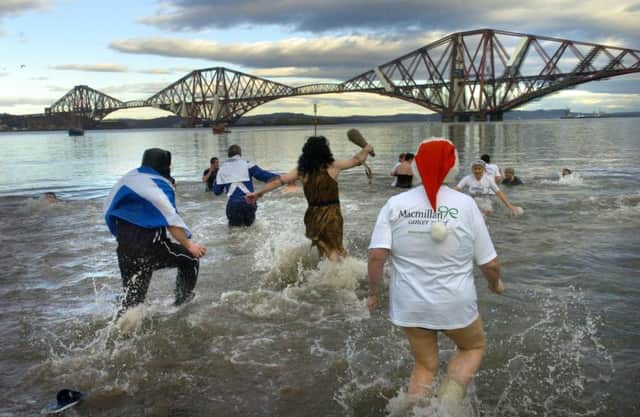How the Loony Dook became a Scottish New Year tradition
This article contains affiliate links. We may earn a small commission on items purchased through this article, but that does not affect our editorial judgement.


But one of the strangest Scottish New Year traditions is a relatively modern invention. Since its creation in the 1980s, the Loony Dook has quickly been adopted by the people of South Queensferry, near Edinburgh, as an annual celebration to welcome in the New Year.
The event sees thousands of “dookers” in fancy dress – ranging in age from 8 to 80 – taking a plunge in the freezing Forth on January 1 every year.
The origins of the Loony Dook
Advertisement
Hide AdAdvertisement
Hide AdWhile the origins of some Hogmanay traditions have been lost in the mists of time, the Loony Dook has a clear starting point.
The first Dook to place on January 1 1987, thanks to a conversation between locals in The Moorings Lounge bar during the Christmas break of 1986.
Andy Kerr and his pal Jim Kilcullen were chatting about a different way they could celebrate New Year that year, when Kilcullen suggested a novel hangover cure.
“Ach, let’s jump in the Forth on New Year’s Day, maybe it’ll clear the hangovers!” said Kilcullen, according to Loony Dook organiser David Steel.
Kerr agreed by saying “If you will, I will,” and soon other friends and locals decided to join in too.
Kerr then coined the name “Loony Dook” and a new tradition was born.
Only a handful of people took part in that very first Loony Dook, but two of them – friends Jim MacKenzie and Ian “Rambo” Armstrong – have continued to jump in the Forth every January 1 since.
Advertisement
Hide AdAdvertisement
Hide Ad2017 will be their 31st Dook, and MacKenzie and Armstrong will lead the pre-Dook procession, accompanied by the Town Crier and Donald Wilson, the Lord Provost of Edinburgh.
Becoming a tradition
During the first few years, the Loony Dook remained a small, local affair but from 1990 onwards the event began capturing people’s imagination and there was a gradual increase in the number of participants and spectators.
In the late 1990s the event was first included in Edinburgh’s Hogmanay publicity material produced by Unique Events – who have officially organised the Loony Dook since 2009 – and this helped to attract people from all over the world.
“It really exploded at the Millenium as the Loony Dook was filmed live by the BBC and beamed world-wide,” says Steel.
Steel suggests that the success of the Loony Dook is due to the combination of the huge media attention and the fact that it offers something a little bit different for visitors.
“What could be more ‘different’ than jumping into the freezing Forth? The fancy dress aspect is also an attraction – people just love to do crazy things,” he says.
Internationally famous
The event now welcomes over 1,000 participants – and around 4,000 spectators – every year.
Advertisement
Hide AdAdvertisement
Hide Ad“Participants come from Edinburgh and from all over the world. Last year visitors from 25 different countries participated including USA, Australia, Mexico, Qatar, Brazil and Puerto Rico,” says Frances Sutton from Unique Events.
For many years the Loony Dook had been managed by virtually one person alone – Steel – but the growth of the event meant that it was necessary for Unique Events to take over management of the event and make it part of the official Edinburgh’s Hogmanay programme.
The Dookers
Although the freezing water and chilly January air can be quite a shock to the system, Steel suggests that the camaraderie of all the participants makes it much easier to bear.
The fancy dress costumes help to add to the light-hearted, comical atmosphere of the occasion and it’s common to see fairies, footballers, nurses, clowns or even people in three-piece suits jumping into the Forth.
“In 2010 we had a couple from London who actually got married on Queensferry High Street, surrounded by huge crowds, immediately after doing the Loony Dook,” remembers Steel. “Another year we had a bride and groom in the water in full wedding dress. They had got married that morning in the Orocco Pier Hotel.”
As well as being a fun spectacle and unusual hangover cure, the Loony Dook also has a more serious side. Steel estimates that, over the years, the Dook has raised over £80,000 for local charities – plus hundreds of thousands more raised by individual participants for their own chosen charities.
“A donation from every ticket goes directly to the South Queensferry branch of the RNLI who have always been incredibly supportive of the event,” says Sutton.